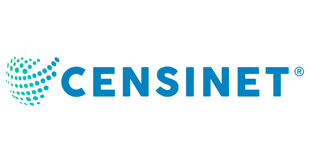HIT Consultant sat down with Mike McSherry, CEO, and co-founder of Seattle-based digital prescription platform Xealth to discuss digital health lessons learned in 2020 and what we can expect in 2021. As Xealth’s CEO, Mike also works with Duke Health, UPMC, Atrium Health, and The Froedtert & the Medical College of Wisconsin health network where he uses his background in digital health to connect patients and care teams outside of traditional care settings.
HITC: In 2021, How can digital health reduce race and minority disparities in healthcare?
McSherry: The U.S. has struggled with health disparities, which this pandemic has widened. Many of these disparities can be linked to access, which digital health can assist with – telehealth makes care virtual from any location, clinical decision support can reduce human errors, remote patient monitoring helps keep patients home while linked to care.
Digital health removes hurdles related to transportation, taking time off work, or finding childcare in order to travel in-person for an appointment. It brings care to the patient instead of the other way around, making access simpler. Care through these pathways is also more cost-efficient.
There are still hurdles to overcome. Broadband is widespread but not everywhere and inclusive design of these tools should be considered. How digital tools, including wearables, are built should address differences in gender and ethnicity, especially as these tools are used more frequently in clinical trials, so as not to inadvertently perpetuate disparities.
HITC: Why some hospitals are offering digital health tools to staff but not patients?
McSherry: There are a few factors at play when hospitals offer digital health tools to staff but not patients. One, most health systems are not currently deploying system-wide digital health initiatives, leaving the decisions to individual departments or providers. This can lead to inconsistent patient experiences and more data siloes as solutions are brought in as one-offs.
The second issue is reimbursement. A hospital acting as an employer offering digital health tools as part of its benefits package is different than a patient, who must rely on their health insurance, whether it is a public or private plan. The fact healthcare organizations see digital health tools as a perk shows their value. Now, it is time for CMS and commercial payers to consistently enable their use to help providers care for patients and incorporate digital health as clinicians see fit.
HITC: How hospitals can remain competitive in 2021, especially after tighter margins from COVID-19?
McSherry: Large tech companies, like Google and Amazon, and huge retailers, including Walmart and Best Buy, are looking to deliver the promise of health care that has so far eluded the industry. Venture capital money has been pouring in for funding innovation, with digital health funding hitting a new high in 2020.
These initiatives are all racing to control health care’s front door and if hospitals don’t innovate as well, they run a very real risk of having patients turn elsewhere for care. Payers are also building digital front doors and telling members to go there. People have long expressed their desire to have the same consumer experience in health care that they receive in other industries. The technology is there. It needs to be incorporated with the correct care pathways.
One silver lining during the COVID-19 pandemic is that it showed fast-moving innovation can happen in health care. We worked with hospitals to stand up workflows around telehealth in four days and remote patient monitoring in seven days – an amazing pace. The key is to keep this stride going once we are on the other side of this crisis.
Providers are becoming more digitally savvy to engage patients and deliver holistic care. Hospitals should support this.
HITC: What will be Biden’s impact on COVID-19, how hospital leaders should respond, and what it means that we have a divided congress?
McSherry: Under the current administration, telehealth rules have been relaxed, at least temporarily, along with cross-state licensure so providers are better able to build a front door strategy, helping organizations roll out remote patient monitoring and chronic care management apps. Biden has been a proponent of digitalization in health care and will have a broader engagement. This could lead toward more funding and more covered lives.
A divided Congress will not make much easy for the Biden administration, however, getting on the other side of this pandemic as quickly and as safely as possible is best for everyone. Biden has shown he will make fighting COVID-19 a top priority.
HITC: Will remote patient monitoring become financially viable for hospital leaders in 2021?
McSherry: Why does a diabetic patient need to have every check-in be in-person or a healthy, pregnancy met every few weeks with an in-person visit as opposed to remote monitoring for key values and a telehealth check-in in place of a couple of those visits? Moving forward, hospitals will see the benefit of remote monitoring in terms of lower overhead, along with better patient engagement, outcomes and retention.
To make this work, providers must share risk, and determine digital strategies around attracting patients and then manage them in a capitated way with more digital tools because of the cost efficiencies.
HITC: How do we foster tighter physician-patient relationships?
McSherry: Patients trust their doctors, period. The struggle is going to be more obvious as more people do not have a PCP and turn to health care with a bandage approach to take care of an immediate concern. That will lead to entire populations without that trusted bond who are sicker when they finally do seek care, due to the lack of continuity and engagement early on.
By connecting with people now, where they are comfortable, there is a tighter physician-patient relationship by making it more accessible and reciprocal.




